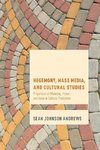
-
 Anglický jazyk
Anglický jazyk
Typography
Autor: Source: Wikipedia
Source: Wikipedia. Pages: 149. Chapters: Sentence spacing, List of pangrams, Unicode, Sentence spacing in language and style guides, Yiddish orthography, Diacritic, Dash, Movable type, Writing system, History of Western typography, Space (punctuation), Letter... Viac o knihe
Na objednávku, dodanie 2-4 týždne
31.86 €
bežná cena: 35.40 €
O knihe
Source: Wikipedia. Pages: 149. Chapters: Sentence spacing, List of pangrams, Unicode, Sentence spacing in language and style guides, Yiddish orthography, Diacritic, Dash, Movable type, Writing system, History of Western typography, Space (punctuation), Letter case, Electrotyping, Typographic ligature, CamelCase, Capitalization, History of printing in East Asia, Phoenician alphabet, Printer (computing), Miles Tinker, Blackletter, Subscript and superscript, List of typographic features, Letterpress printing, Latin alphabet, History of sentence spacing, Serif, Sentence spacing studies, Typesetting, Ruby character, Vox-ATypI classification, Lawrence Johnson (type-founder), Italic type, List of institutions offering type design education. Excerpt: Sentence spacing is the horizontal space between sentences in typeset text. It is a matter of typographical convention. Since the introduction of movable-type printing in Europe, various sentence spacing conventions have been used in languages with a Latin-derived alphabet. These include a normal word space (as between the words in a sentence), a single enlarged space, two full spaces, and, most recently in digital media, no space. Although modern digital fonts can automatically adjust a single word space to create visually pleasing and consistent spacing following terminal punctuation, most debate is about whether to strike a keyboard's spacebar once or twice between sentences. Traditionally, two spaces could distinguish from a mid-sentence abbreviation or initials, as in, "He was faster than I. P. Jones was next." Until the 20th century, publishing houses and printers in many countries used additional space between sentences. There were exceptions to this traditional spacing method-some printers used spacing between sentences that was no wider than word spacing. This was French spacing-a term synonymous with single-space sentence spacing until the late 20th century. With the introduction of the typewriter in the late 19th century, typists used two spaces between sentences to mimic the style used by traditional typesetters. Many experts now say that additional space is not required or desirable between sentences. Typesetting programs such as TeX can modify kerning values to adjust spaces following terminal punctuation, so there is less need to increase spacing manually between sentences (provided that there is some cue to distinguish the end of a sentence from the end of an abbreviated word). From around 1950, single sentence spacing became standard in books, magazines and newspapers. Regardless, many still believe that double spaces are correct. The debate continues, notably on the World Wide Web-as many people use search engines to try to find what is correct. Ma
- Vydavateľstvo: Books LLC, Reference Series
- Rok vydania: 2013
- Formát: Paperback
- Rozmer: 246 x 189 mm
- Jazyk: Anglický jazyk
- ISBN: 9781157388197












